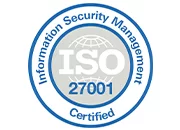Introduction:
Ever wondered if AI could one day make decisions that harm us? That’s the crux of AI safety alignment. In a world increasingly run by machines, ensuring they align with human values isn’t just important—it’s critical. As we integrate AI into various sectors, the need for AI risk management, machine learning ethics, and responsible AI development becomes paramount. Dive in to discover how this alignment shapes our future and what you can do to stay ahead.
AI Risk Management
Identifying and managing potential risks in AI systems is crucial to ensure they do not harm humans. The risks associated with AI can be multifaceted, ranging from technical failures to ethical dilemmas.
Steps to Assess AI Risks
- Identify Potential Risks: Begin by cataloging possible risks such as data privacy issues, algorithmic bias, and safety concerns in decision-making processes.
- Risk Analysis: Evaluate the likelihood and impact of each risk. This can involve quantitative analysis using statistical models or qualitative assessments through expert opinions.
- Mitigation Strategies: Develop strategies to minimize identified risks. This could include implementing fail-safes, improving data governance, and ensuring diverse data sets to combat bias.
- Monitoring and Review: Continuously monitor the AI system’s performance and risks, adjusting strategies as necessary to adapt to new challenges.
Comparing Risk Management Frameworks
Different frameworks can guide AI risk management, such as:
- ISO 31000: A broad framework applicable to any organization that emphasizes a structured approach to risk management.
- NIST AI Risk Management Framework: Specifically tailored for AI, it focuses on promoting trustworthy and responsible AI systems through risk identification and management.
These frameworks highlight the importance of ongoing evaluation and adaptation in the face of evolving technologies and societal expectations.
Machine Learning Ethics
As AI systems become more autonomous, the ethical considerations in machine learning gain prominence. Ethical practices are essential for fostering trust and ensuring AI aligns with societal values.
Key Ethical Principles in AI Development
- Fairness: AI systems must be designed to avoid discrimination and bias. This includes ensuring that training data is diverse and representative of various populations.
- Transparency: Users should understand how AI systems make decisions. This can involve clear documentation and explainable AI techniques that elucidate decision-making processes.
- Accountability: Developers must take responsibility for AI outcomes. Establishing clear lines of accountability helps ensure that unethical actions can be addressed and rectified.
The Role of Ethical Guidelines in AI Research
Ethical guidelines play a pivotal role in guiding researchers and developers toward responsible practices. Organizations such as the IEEE and the Partnership on AI have established comprehensive ethical frameworks that encourage the development of systems that prioritize human well-being. These guidelines help ensure that machine learning ethics are not just theoretical concepts but are actively integrated into AI development practices.
Autonomous Systems Safety
Safety measures in autonomous systems are integral to achieving AI safety alignment. As these systems operate independently, ensuring their safety becomes a pressing concern.
Case Studies of Autonomous Systems and Safety Protocols
- Self-Driving Cars: Companies like Waymo and Tesla have implemented extensive safety protocols, including real-time monitoring systems that can detect and respond to hazards. These systems are designed to prevent accidents and ensure passenger safety.
- Drones in Delivery Services: Companies like Amazon are developing drones with built-in safety features, such as obstacle avoidance systems and emergency landing protocols. These measures help mitigate risks associated with autonomous navigation.
Challenges in Implementing Safety Measures
Despite advancements, several challenges persist in ensuring safety in autonomous systems:
- Complex Environments: Autonomous systems must operate in unpredictable real-world conditions, making it difficult to foresee every possible scenario.
- Regulatory Hurdles: Navigating regulatory frameworks can be complex, as safety standards may vary significantly across regions and applications.
- Public Perception: Gaining public trust is essential for widespread adoption. Concerns about safety and ethical implications can hinder acceptance.
Responsible AI Development
Responsible AI development is essential for ensuring alignment with human values and ethics. As AI continues to permeate various sectors, establishing best practices is critical.
Best Practices for Responsible AI Development
- Inclusive Design: Involve diverse stakeholders in the design process to ensure various perspectives are considered, reducing the risk of bias.
- Continuous Learning: Foster a culture of continuous learning within organizations to stay updated on ethical standards and technological advancements.
- Impact Assessments: Conduct regular assessments to evaluate the social, economic, and ethical impacts of AI systems before deployment.
The Role of Transparency and Accountability
Transparency and accountability are foundational to responsible AI development. Organizations should:
- Provide clear information about how AI systems operate and the data used to train them.
- Establish mechanisms for accountability, ensuring that developers are held responsible for the outcomes of their technologies.
By prioritizing these practices, developers can foster trust and ensure that AI systems are not only effective but also aligned with societal values.
Conclusion
AI safety alignment is not just a technical challenge—it’s a moral imperative. As we continue to advance in technology, understanding and implementing these principles is crucial for businesses to ensure their AI systems act responsibly. Trust WildnetEdge to guide you through aligning AI with ethical standards. Are you ready to make your AI systems safer? Let’s start today.
FAQs
Q1: What is AI safety alignment?
Ans. AI safety alignment involves ensuring AI systems’ actions and decisions align with human values and ethics.
Q2: How does AI risk management contribute to safety alignment?
Ans. AI risk management identifies and mitigates potential threats, ensuring AI operates safely and aligns with human goals.
Q3: Why are machine learning ethics crucial for AI development?
Ans. Ethics in machine learning guide the creation of AI systems that respect human rights and values, ensuring they act responsibly.
Q4: What challenges exist in autonomous systems safety?
Ans. Challenges include ensuring real-time decision-making aligns with safety protocols and managing unexpected scenarios.Q5: How can WildnetEdge assist with AI safety alignment?
A5: WildnetEdge provides expertise and solutions to ensure your AI systems are ethically aligned and safe for deployment.

Nitin Agarwal is a veteran in custom software development. He is fascinated by how software can turn ideas into real-world solutions. With extensive experience designing scalable and efficient systems, he focuses on creating software that delivers tangible results. Nitin enjoys exploring emerging technologies, taking on challenging projects, and mentoring teams to bring ideas to life. He believes that good software is not just about code; it’s about understanding problems and creating value for users. For him, great software combines thoughtful design, clever engineering, and a clear understanding of the problems it’s meant to solve.
 sales@wildnetedge.com
sales@wildnetedge.com +1 (212) 901 8616
+1 (212) 901 8616 +1 (437) 225-7733
+1 (437) 225-7733































